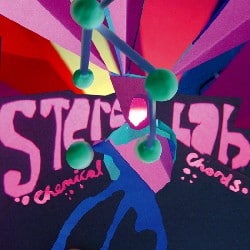


Extending and editing between the two mixes, teasing the instrumental before finally bringing the sax and vocals together for a 'discodub' finale. The collaboration with Dan Tyler continues, as he again works his desk dubbing magic. The "Sound Design" instrumental / version sees the studio team craft a disco meets reggae in a cod-style to wonderful, almost Balearic effect. Released on 7" and 12", they have striking differences.

Hatching the idea to create a label to showcase their capabilities, Parr played all the instruments except the distinctive sax by friend Andy MacDonald, while Minott's delivery is at his prime, storytelling in the Jamaica tradition of hardship and praise.

Having grown up and become a star out of Kingston, JA, with over 50 albums and hundreds of singles for the likes of Studio One and Black Roots labels, the legendary vocalist was a pioneer of the Dancehall and then later Lovers Rock sounds.īased in London for much of the 1980s, a chance meeting in the Wackies offices he met producer Steve Parr, who had recently opened the Sound Design Studio next door. Recorded in Soho in mid-80s London, the Boogie meets Reggae song comes in vocal and instrumental mixes, as well as a wonderfully teasing long Discomix by NAD aka Dan Tyler (Idjut Boys). Chemical Chords manages to be even more concisely charming than that album, sacrificing little of Stereolab's distinctive sound for its immediacy.Review: "Emotional Rescue presents the first ever reissue of Sugar Minott's rare 12" of I Remember Mama. The band also revisits its own pop heyday on "Valley Hi!" and "Nous Vous Demandons Pardons," boasting the clever counterpoint and fuzzy Moogs of the Mars Audiac Quintet era. "Cellulose Sunshine"'s gorgeous lysergic chamber pop could be a throwback, if it weren't so modishly sleek, and "Pop Molecule"'s massive synths and big, backward drums offer a futuristic take on acid rock. "Three Women"'s rock-solid bass and tambourine shout out to Motown's heyday, but its buzzing organs and bongos feel like they were channeled from a long-lost exotic novelty album. A strong '60s feel permeates much of the album, but the way the band reconfigures these sounds prevents it from sounding archaic. Likewise, Stereolab's version of "going pop" means looking beyond what "pop" means in the moment. Despite its name, Chemical Chords actually features some of Stereolab's most organic-sounding music in some time, downplaying their arsenal of analog synths in favor of live instrumentation - the burbling synths on "Self Portrait with Electric Brain" support the song's snazzy brass and strings rather than dominating them. "One Finger Symphony"'s animated brass, guitars, and percussion suggest gears rotating and levers lifting and falling in playful but somewhat sinister fashion "Daisy Click Clack" swishes in on brisk drums and a quaint melody that could be borrowed from a piano rag. "Neon Beanbag" jumps in hooks first, opening the album with a surprisingly swift rhythm and Laetitia Sadier's more familiar, bopping backing vocals. Actually, the shortness and directness of these songs could be seen as a bigger experiment for the band than their frequent lockgrooves and hypnotic passages with those trimmed, Chemical Chords presents a version of Stereolab's sound that is just as vivid as their earlier output, but fizzing with immediacy and urgency. On Chemical Chords, Stereolab's 4AD debut, they take a much more pop-focused approach than their immediately previous work - which is saying something, since neither Fab Four Suture nor Margerine Eclipse were among their more experimental moments in the first place. At times, Stereolab's music seems so unchanging that it feels more like it was generated by a laser-guided, lounge pop-meets-Krautrock machine than an actual "groop," but the small tweaks they make to their master plan on each album end up making a big impact.


 0 kommentar(er)
0 kommentar(er)
